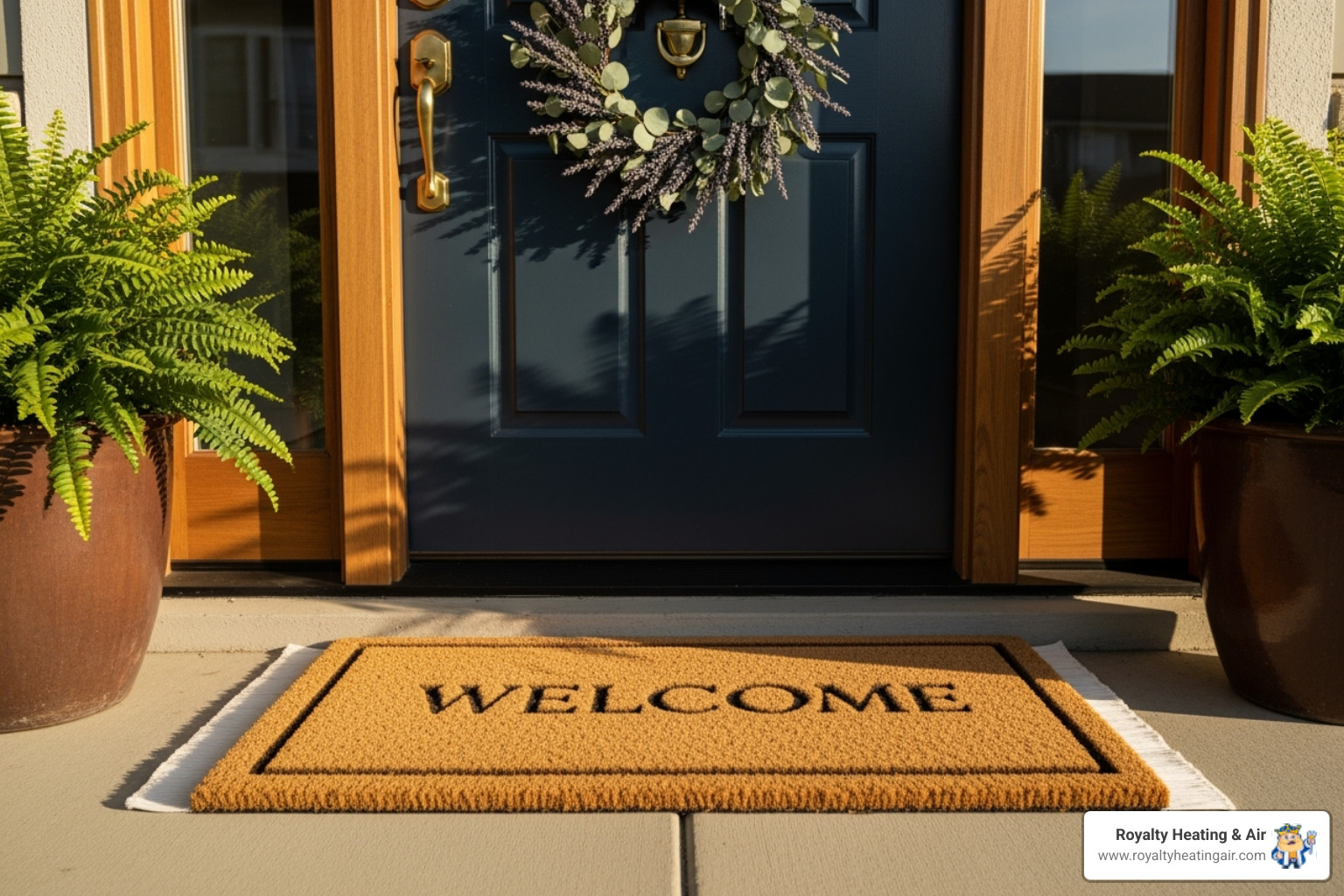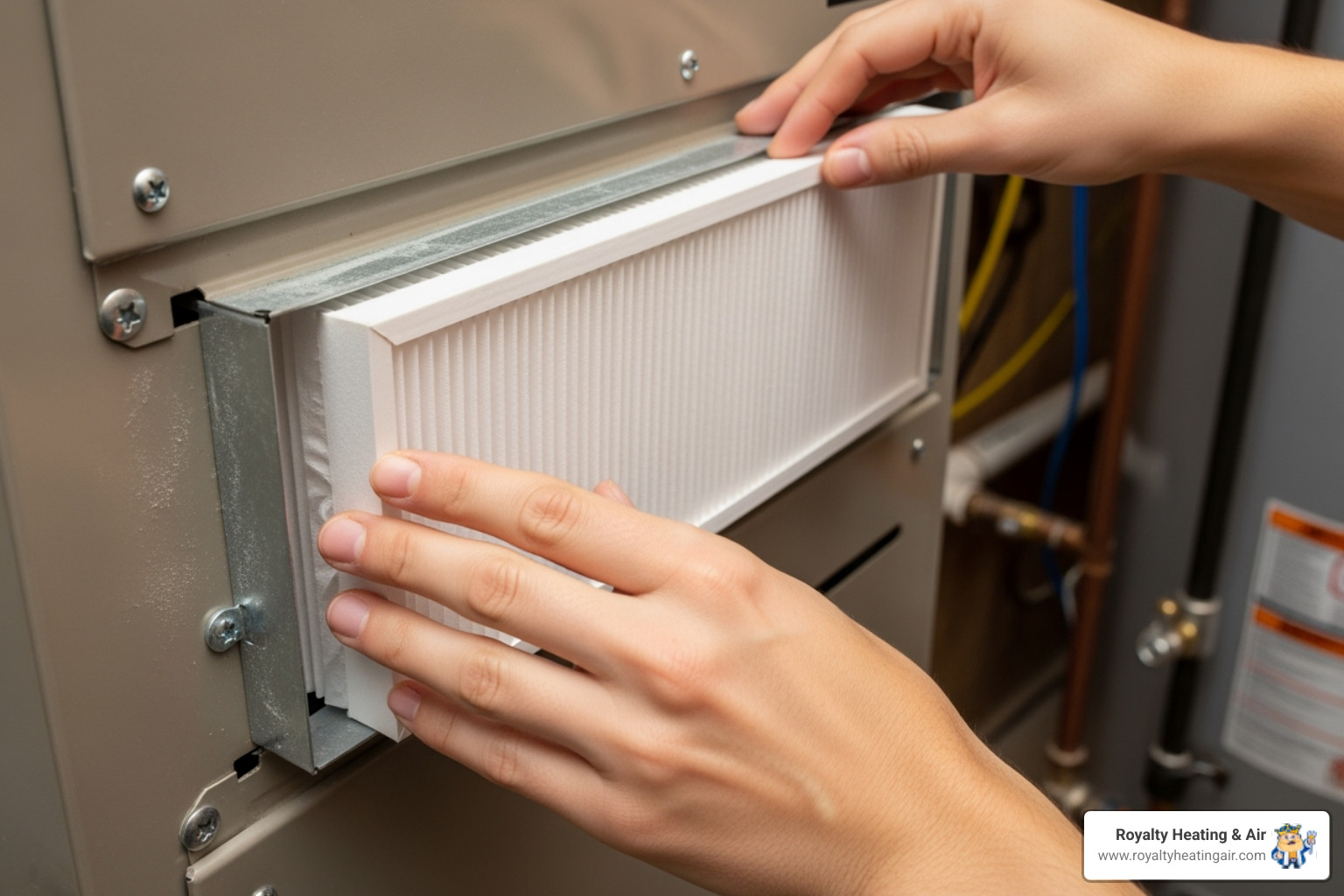Reduce home dust and you'll create a healthier, more comfortable living space. Here are the most effective strategies:
Quick Dust Reduction Methods:
If you're one of the 1 in 4 people who feel "extremely worried" about indoor dust, you're not alone. The average American home accumulates 40 pounds of dust each year, and 77% of people believe that less dust means a healthier home.
They're right. Household dust is a complex mix of dead skin cells, pet dander, fabric fibers, pollen, bacteria, and dust mites that can trigger allergies and worsen asthma.
While 80% of household dust enters on shoes, it also comes from indoor sources like upholstery, clothing, and your HVAC system. The good news is you can dramatically reduce dust by combining prevention (stopping it from entering) and removal (cleaning what's already there).

That layer on your coffee table is a microscopic collection of particles telling the story of your home's daily life.
When you see dust particles in a sunbeam, you're seeing a mix of your home's daily life. Dead skin cells make up a large portion, as humans shed thousands daily. It also includes pet dander, fabric fibers from clothes and furniture, and soil particles from outside.
Your dust also contains pollen, bacteria, and dust mites. Modern homes even have microscopic plastic particles from synthetic materials. Worse, research shows dust can contain environmental contaminants like metals and endocrine disruptors.
80% of household dust enters on shoes, bringing in soil, pollen, and pollutants with every step inside. Indoor sources also create dust. Clothing sheds fabric fibers, upholstery releases particles, and a poorly maintained HVAC system can circulate dust throughout your home.
Pets contribute dander and fur, while daily activity stirs up settled particles. This results in the average home accumulating 40 pounds of dust annually.
Dust is a primary delivery system for allergens that trigger uncomfortable symptoms like sneezing when you clean. Common respiratory issues include sneezing, itchy eyes, and congestion. Symptoms often worsen in bedrooms, where dust mite allergies are problematic. Up to 10% of a two-year-old pillow's weight can be dust mites and their waste.
For those with asthma, dust can trigger attacks. The Alberta Health Services guide to controlling dust and allergens offers excellent information on managing these health impacts.
Dust can also harbor viruses, which is why efforts to reduce home dust are about protecting your family's health, not just tidiness. In fact, recent studies show 1 in 5 people were surprised to learn dust can contain viruses.
The smartest way to reduce home dust is to stop it from entering. These prevention strategies are your first line of defense.

Since 80% of household dust enters on shoes, your entryway is ground zero. A simple no-shoes policy can dramatically reduce dust levels. Use high-quality doormats both outside and inside each entrance. Choose mats with deep grooves or bristles to trap dirt, and clean them regularly so they don't become dust sources themselves.
Sealing entry points is another powerful strategy. Use weatherstripping and caulk to close gaps around windows and doors. During high pollen seasons, keep windows closed and rely on your filtered air conditioning.
Your decorating decisions can either attract or repel dust. Making dust-smart choices means choosing practical, stylish options.
Hard surface flooring like hardwood or tile gives dust fewer places to hide than carpet. If you prefer carpet, choose low-pile options or use washable area rugs. For furniture, choose leather and smooth wood surfaces, which are easy to wipe clean. Be strategic about placing fabric-heavy pieces that trap dust.
Minimalist decor is dust-smart. Reducing clutter means fewer surfaces for dust to settle on, simplifying your cleaning routine. For window treatments, swap heavy fabric curtains for easier-to-clean roller or vertical blinds, which don't trap dust.
Some houseplants help reduce home dust by using their leaves to trap airborne particles. Plants like English ivy, peace lilies, and snake plants are effective at trapping airborne particles and toxins.
Place these plants in high-traffic areas. While they won't eliminate dusting, they can help reduce the workload and make your home more vibrant.
Even with the best prevention, dust is inevitable. The key is using smart cleaning techniques that capture dust rather than just moving it around.

Effective dust removal is about working smarter, not harder. The goal is to capture dust, not just spread it around. Use the top-to-bottom cleaning method: start with ceiling fans and light fixtures, working your way down to shelves and finally the floors. This ensures you're not re-cleaning surfaces as dust falls from above.
Your choice of tool is critical. Microfiber cloths are excellent for trapping dust. Using a slightly damp cloth is even more effective, as moisture helps grab and hold particles. For floors, a HEPA filter vacuum is essential, capturing 99.97% of fine dust particles that regular vacuums miss. After vacuuming hard floors, a damp mop can eliminate up to 90 percent of remaining dust.
Not all cleaning tools are created equal. Here's a breakdown of what works:
A consistent cleaning schedule is key to preventing overwhelming dust buildup.
Your HVAC system acts as the lungs of your home, circulating and filtering air. A well-maintained system is a partner in fighting dust, but a neglected one can make the problem worse by blowing particles through every room.

Clogged filters or dusty ducts mean your HVAC system is circulating dust throughout your home. Optimizing your system is crucial to reduce home dust. At Royalty Heating & Air, we see this challenge daily in homes across Roseville, Lincoln, and surrounding areas. A few adjustments can turn your HVAC from a dust distributor into a dust-fighting machine. If you need professional help, find more info about air duct cleaning services on our website.
Your air filter is the hero of dust control, but it only works if you use the right kind and change it regularly. Upgrade to high-MERV filters. A MERV 10 or higher filter captures far more small dust particles than basic MERV 5-8 filters. For homes with pets, a MERV 14-16 filter is ideal for trapping dander and allergens.
The standard "every three months" filter change is just a guideline. If you have pets or live in a dusty area, you may need to change it every 30-60 days. If the filter looks gray and clogged, it's time for a new one.
Professional duct inspection is also important. Over years, dust, debris, and mold can build up inside ducts, which then gets blown into your living space. An inspection reveals if your ducts need cleaning.
Air moisture plays a huge role in dust accumulation. Dust mites, a major component of dust, thrive in humidity above 50% but struggle in drier conditions. Aim for a home humidity level between 30% and 50%. This range discourages dust mites while remaining comfortable. Monitor levels with an inexpensive hygrometer.
Use dehumidifiers if your home is consistently above 50% humidity, especially in basements. Clean the unit regularly to prevent mold growth. For more guidance, the EPA guide to indoor air quality offers excellent recommendations.
While your HVAC handles the whole house, air purifiers act as assistants in specific rooms. They use HEPA filters to capture 99.97% of airborne particles as small as 0.3 microns, catching them before they settle as dust.
Strategic placement is key. Use purifiers in rooms where you spend the most time, like bedrooms and living rooms. Ensure the unit is sized correctly for the room's square footage. Combining an optimized HVAC system with air purifiers attacks dust from multiple angles, providing whole-home circulation and targeted room protection.
Different rooms have different dust challenges. Let's tackle each space with targeted strategies.
Since we spend a third of our lives sleeping, creating a dust-free bedroom is crucial for health and comfort. Bedrooms are havens for dust mites, which feed on dead skin cells. Use allergen-proof mattress and pillow covers; these zippered, tightly-woven covers create a barrier that locks mites and allergens out.
Wash all bedding weekly in hot water (at least 120°F). This temperature is necessary to kill dust mites and wash away their allergens. Since up to 10% of a two-year-old pillow's weight can be dust mites and their waste, wash pillows every three to six months according to their care labels.
Clean under the bed weekly; use bed risers or a higher bed frame to make this task easier. In the closet, keep doors closed to contain dust from clothing fibers and store out-of-season items in sealed containers.
Living rooms are high-traffic hubs, which means more activity and more dust. Upholstered furniture is a dust magnet; vacuum it weekly with a brush attachment, focusing on crevices. For serious dust issues, use washable slipcovers.
Electronics attract dust due to static electricity, so wipe them down weekly with a damp microfiber cloth. Window treatments also need cleaning; vacuum fabric curtains weekly and wipe down blind slats.
The secret weapon is managing clutter. Fewer decorative items mean fewer surfaces for dust to settle on, which simplifies cleaning.
Pet owners face a unique challenge: pet dander. These tiny skin flakes contain proteins that trigger allergies.
We've covered what household dust is, how it affects your health, and the best strategies to keep it out and clean it up. Achieving clean air is an ongoing process. By consistently applying these strategies, you can dramatically reduce home dust and create a healthier living space.
Remember the key pillars: prevention (doormats, no-shoes policy), smart cleaning (damp microfiber, HEPA vacuums), and air quality control (high-MERV HVAC filters, proper humidity, air purifiers). Each step works together to trap dust and keep mites at bay.
This comprehensive approach leads to a home that isn't just visibly cleaner but is genuinely healthier. Less dust means fewer allergens, easier breathing, and a more comfortable place for your family.
Here at Royalty Heating & Air, we believe everyone deserves to breathe easy in their own home. We're passionate about helping families like yours achieve the best indoor air quality possible. From making sure your heating and cooling systems are top-notch to giving your air ducts a thorough clean, we're here to support your healthy home goals.
Ready to take that next step towards a truly dust-free and fresh-air home? We'd love to help! Let's work together so you and your family can enjoy cleaner air. Improve your home's air quality with professional duct cleaning.
